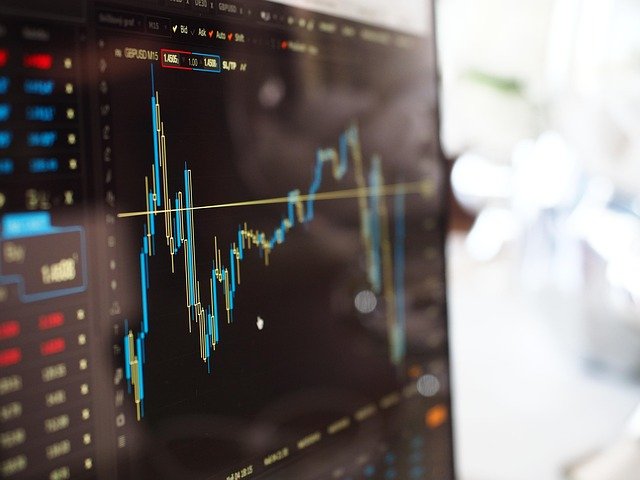Stock Trading: Market Forces, Technology and Strategy
Stock trading combines information, timing, and disciplined decision-making. Investors and traders watch company results, macro trends, and technological developments to assess opportunities and risks. Understanding how sectors like energy interact with broader markets, how emerging technologies such as quantum computing may influence systems, and how diversification and risk controls shape outcomes can help clarify why prices move and how portfolios evolve over time.

How does energy influence stock trading?
The energy sector often drives market sentiment because it affects production costs, consumer spending, and national balances. Movements in oil, natural gas, and electricity prices can ripple through industrial, transportation, and utility stocks. For example, rising energy costs can compress margins for energy-intensive firms while benefiting producers. Policy shifts toward renewables or subsidies also reallocate investment and can alter valuations across related industries.
Energy-related news tends to create both sector-specific and broader market volatility. Traders follow supply-demand indicators, geopolitical developments, and regulatory announcements. For longer-term investors, the energy transition toward cleaner sources presents structural shifts in revenue models and capital spending plans that influence growth expectations across multiple sectors.
Can quantum computing change trading?
Quantum computing is an emerging technology that may change some computational tasks used in finance, particularly optimization, simulation, and certain types of machine learning. In trading, that could mean faster solutions for portfolio optimization, risk analytics, and pricing complex derivatives. However, practical, large-scale quantum advantage for most trading tasks is still under development and depends on advances in hardware, error correction, and algorithms.
Financial institutions are experimenting with hybrid approaches that combine classical and quantum-inspired methods today. For traders and investors, the near-term implication is to watch developments and consider how improved computational tools might affect market efficiency, speed of execution, and the valuation of technology-focused companies without assuming immediate, sweeping changes.
Why is diversification important?
Diversification spreads exposure across different assets, sectors, and geographies to reduce the impact of any single adverse event. A portfolio that includes equities from multiple industries, fixed income, and alternative assets can be less volatile than one concentrated in a single stock or sector. Diversification does not eliminate losses, but it lowers the likelihood that one event will wipe out gains.
Practical diversification considers correlations between holdings. For example, energy stocks may move together under commodity price shocks, whereas technology or consumer staples can behave differently. Rebalancing periodically keeps allocations aligned with risk tolerance and financial goals. For investors seeking steady compounding, diversification is a foundational strategy to manage idiosyncratic risk while aiming for long-term growth.
How to measure and manage risk?
Risk measurement in trading typically uses volatility metrics, drawdown analysis, and statistical tools like value-at-risk (VaR) or stress testing. Volatility indicates how widely prices move; drawdowns show peak-to-trough losses; VaR estimates potential losses at a given confidence level. These metrics help set position sizes and stop-loss levels to avoid outsized exposure.
Risk management tools include position limits, diversification, hedging with options or futures, and disciplined exit plans. Liquidity risk—how easily a position can be sold—also matters, especially in volatile markets. Regular scenario analyses that consider geopolitical shocks, commodity swings, or technological disruptions (for instance affecting an energy or tech-heavy portfolio) provide a clearer picture of potential outcomes and help shape prudent trading rules.
What drives long-term growth in stocks?
Long-term stock growth is driven primarily by corporate earnings expansion, reinvestment in productive assets, innovation, and favorable macro conditions. Companies that consistently increase free cash flow, expand market share, or enter new markets tend to support higher valuations over time. Structural trends—such as energy system changes, digital transformation, or advances in computing—can create new growth opportunities and alter competitive landscapes.
Investors should distinguish between transient momentum and durable growth. Financial metrics like revenue growth, profit margins, and return on invested capital, combined with qualitative factors such as management quality and industry positioning, inform expectations. External forces—regulation, interest rates, and technological change like quantum computing—shape the environment in which businesses grow and should factor into long-range projections.
Conclusion
Stock trading requires a mix of sector knowledge, technological awareness, and disciplined portfolio construction. Energy markets and emerging technologies influence price drivers and investment themes, while diversification and robust risk measurement help manage uncertainty. Long-term growth depends on fundamentals and the ability of companies to adapt to changing markets, so balancing short-term signals with strategic planning is essential for informed decision-making.






